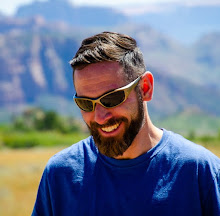MacDill AFB has a nice chunk of land in the middle of Tampa Bay and is working to implement an ongoing prescribed burn program to efficiently manage the large areas of upland habitat. The FL Division of Forestry helped us out by executing a burn on a recent day when all the right weather conditions came together. These images were taken with our work camera/digicam and were not processed with any editing software.
A Forestry employee (lower right) sets a fire on the edge of some palmetto.

The saw palmettos burn extremely hot (lower right), and when the sabal palms have lots of dead fronds clinging to their trunk, the fire can sometimes creep up into the crown. These images may look devastating, but the burns trigger new growth and an overall rejuvenation of the ecosystem.

One of the benefits of fire is the maintenance of invasive species. This non-native cogan grass will creep into an area and take over, outcompeting the native species. After killing the grass with an herbicide, the fire will clear out all the plant material and allow new native colonizing species to move in and return balance to the habitat. (This is the before picture...see below)

The DOF employee lights the cogan grass.

The dead cogan grass went up fast and hot.

Here is the after picture. All that nasty cogan grass is gone and the slate is clean. Hopefully we'll see some nice native species popping up soon. Since native plants have evolved with fire, most of them develop deep root systems able to sustain the plant through tough droughts and wildfires. So although this area looks dead, there is life below the surface!

This is just a cool picture showing the fire moving back into the woods.

The piece of land that was burned is mostly open grassy scrub and some pine flatwoods, but there is an oak hammock there as well. The rain from the previous night still hadn't drained completely from this area so it didn't burn too well. But as the low fire crept through some areas, the smoke provided a nice filter for the falling afternoon sun to stream through the forest.

I hope I kept your attention through today's environmental lecture. Pictures of fire always help! More Vanessa pics to come and I have 3 weddings in the next two weeks, so there will be plenty to post. Check back soon!

No comments:
Post a Comment